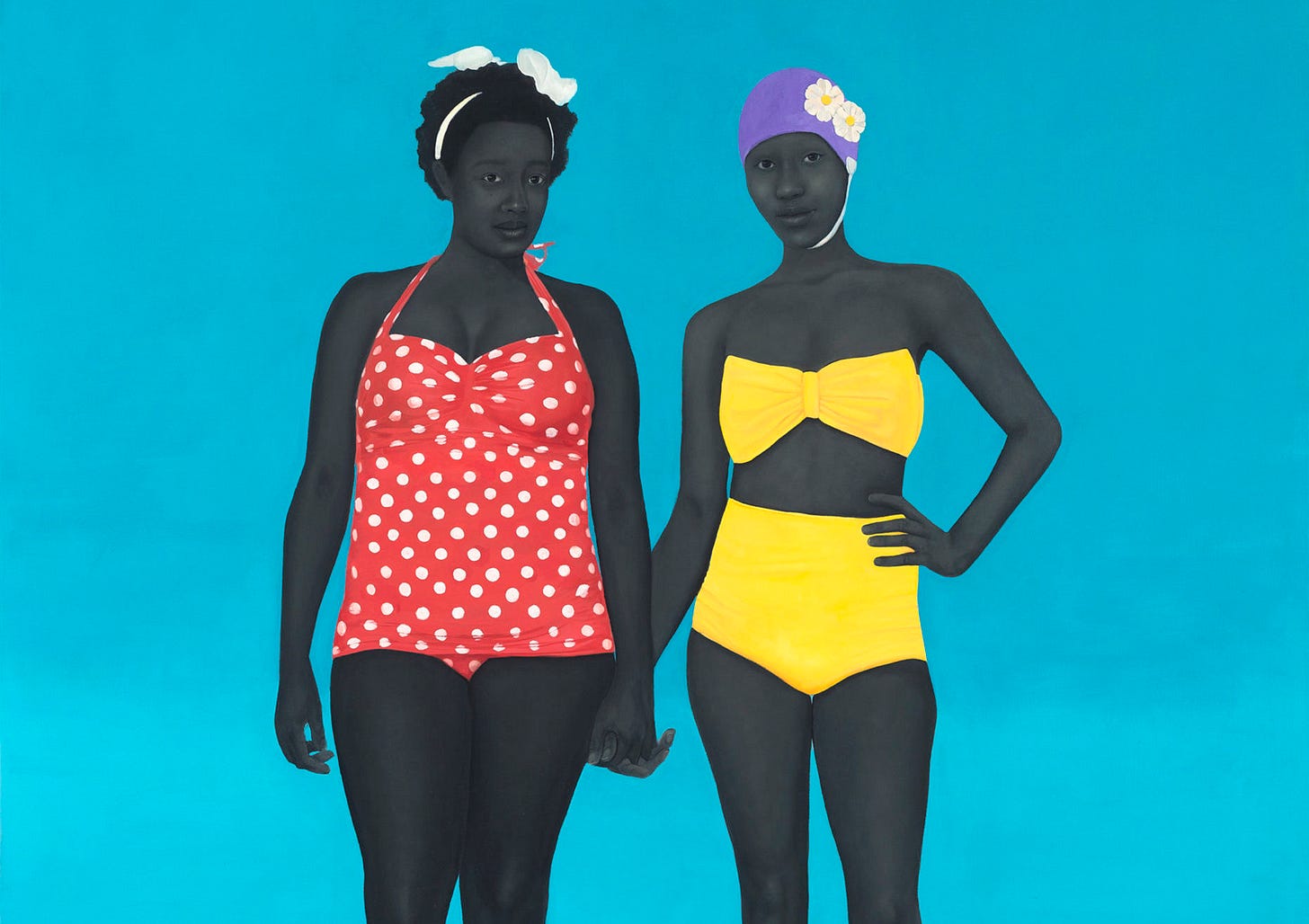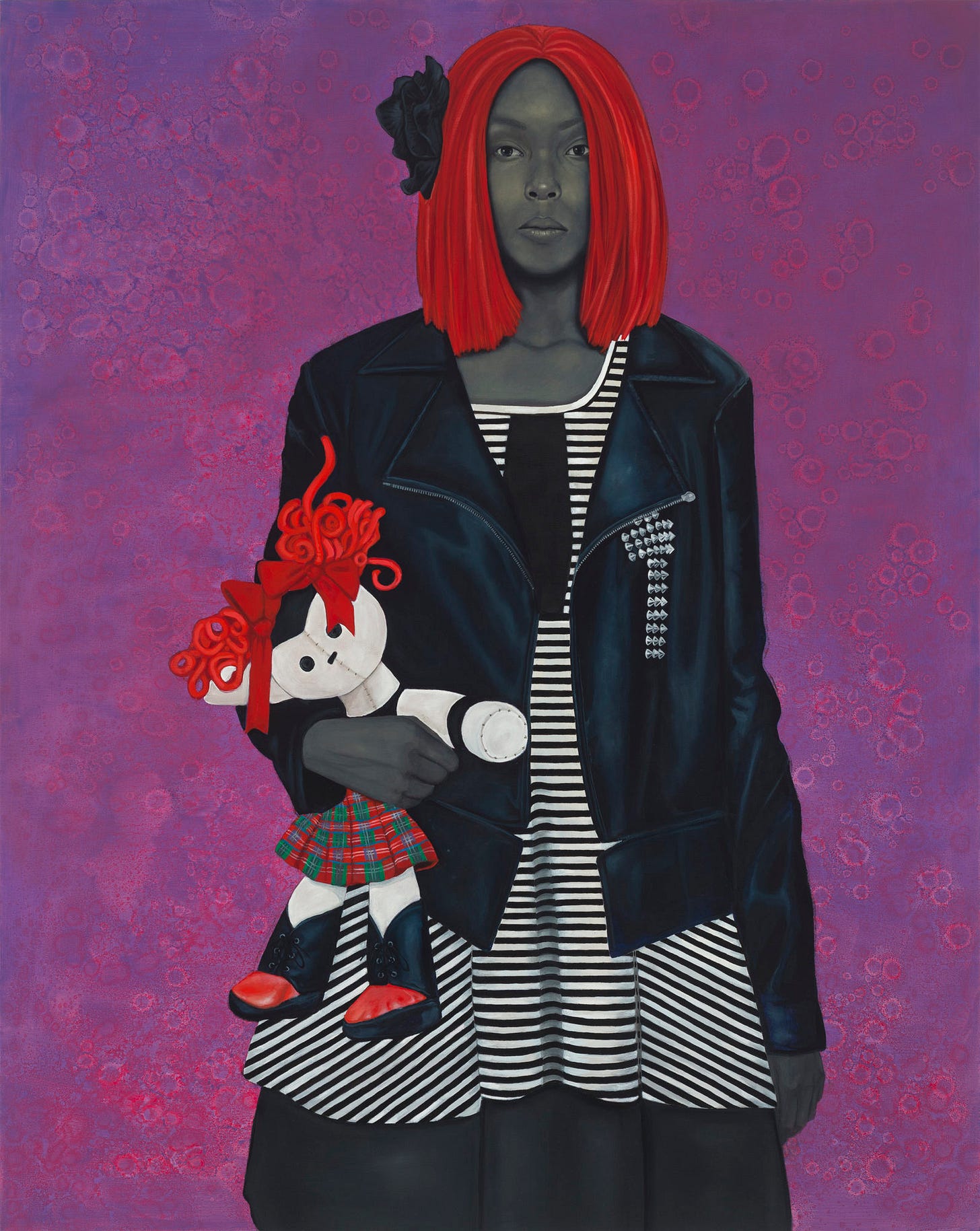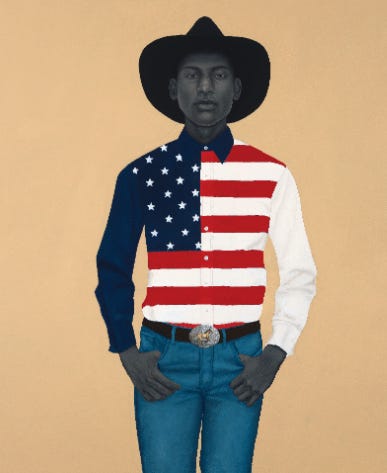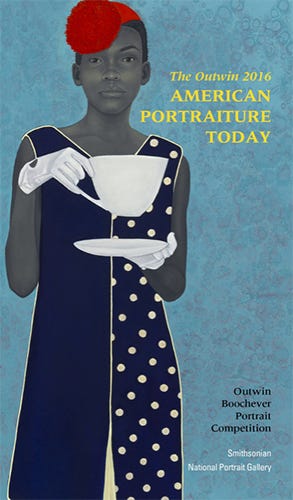Amy Sherald (b. 1973) has emerged as a transformative force in contemporary American art. Renowned for her innovative use of grisaille, a technique in which African American skin is rendered in nuanced shades of gray, Sherald reconfigures conventional portraiture to foreground the individuality and humanity of her subjects.

Amy Sherald’s work marks a significant departure from the conventional practices of portrait painting. Born in Columbus, Georgia, in 1973, Sherald’s early experiences in a racially segregated society informed her understanding of identity and self-representation. Her signature approach, depicting African American figures with grayscale skin tones juxtaposed against vibrant, often pastel, backgrounds, forces viewers to reconsider the superficial markers of race and instead engage with the deeper essence of the individual. Her breakthrough, which culminated in the official portrait of former First Lady Michelle Obama, has sparked both critical acclaim and a wider conversation about representation in American art (Pogrebin).
Sherald’s early life in the segregated South instilled in her a keen sensitivity to the ways in which racial identity is perceived and constructed. Although her parents initially envisioned a career in medicine for her, her latent passion for art led her to pursue a BFA at Clark Atlanta University (Fikes). After graduating in 1997, she expanded her training with an MFA from the Maryland Institute College of Art in 2004. During this period, Sherald also engaged in international residencies, experiences in Panama and later in Norway with renowned painter Odd Nerdrum broadened her artistic vocabulary and honed her technical skills (CAM St. Louis). Moreover, personal challenges, including a life‐threatening heart condition culminating in a successful transplant in 2012, have deeply influenced her work’s themes of resilience and transformation (BlackPast).
Her trajectory from regional exhibitions to national and international acclaim is well documented. Sherald’s early exhibitions at venues such as the University of North Carolina’s Sonja Haynes Stone Center and the Reginald F. Lewis Museum in Baltimore set the stage for later, more widely publicized shows, including the traveling exhibition “The Outwin 2016” and her historic commission for the National Portrait Gallery (NMWA).

Central to Sherald’s practice is the deliberate use of grisaille, a technique historically associated with monochromatic underpaintings in classical art. In Sherald’s hands, grayscale transcends its technical origins to serve as a powerful symbol: by stripping away the immediate associations of skin color, she invites the viewer to look beyond racial categorizations and to see the sitter as a complete, multifaceted individual. This method echoes the early black-and-white photographic portraits curated by W.E.B. Du Bois for the 1900 Paris Exposition, and it is further refined through her apprenticeship with Odd Nerdrum, whose classical techniques have informed her layered approach to paint (CAM St. Louis; The Art Story).
Sherald’s process is both rigorous and intimate. She begins with an in-depth photographic session, often conducted outdoors to capitalize on natural light, and selects her subjects from the diverse tapestry of everyday American life. She then carefully chooses wardrobe and props, constructing a staged narrative that is later translated onto canvas. The final paintings are marked by clean color-field backgrounds that contrast with the subtle tonal gradations of the figures’ skin, a visual strategy that both elevates and humanizes her subjects (Art21; NMWA).

Sherald’s portraits operate as interventions in a long-standing visual tradition that has historically marginalized Black subjects. By rendering her sitters in grayscale, she deliberately “removes” the immediate emphasis on race, yet she does not erase racial identity. Instead, her work opens a space for a more nuanced exploration of individuality. In her portrayal of Michelle Obama, for example, the former First Lady is presented not as an abstract symbol of political power but as a relatable human being whose personal qualities (dignity, strength, and warmth) transcend conventional stereotypes (Pogrebin; The Guardian).

Similarly, Sherald’s work on subjects like Breonna Taylor extends this conversation into the realm of social justice. Her sensitive and carefully staged portrait of Taylor has been interpreted as both a memorial and a call for recognition of Black lives beyond the narratives of victimization. In these works, Sherald crafts a visual language that simultaneously celebrates everyday resilience and critiques the historical underrepresentation of Black people in the arts (BlackPast; Ocula).
Beyond individual portraiture, Sherald’s paintings are imbued with broader cultural narratives. They question the canonical boundaries of American art by introducing voices and perspectives that have been consistently overlooked. Her work thus functions as both aesthetic innovation and social commentary, an effort to reassert the presence of Black subjects in spaces that have long excluded them (The Guardian; Art21).

Since her national breakthrough, Amy Sherald’s work has resonated widely with both art critics and the public. The unveiling of her portrait of Michelle Obama at the Smithsonian’s National Portrait Gallery led to a marked increase in museum attendance and invigorated discussions around modern portraiture. Critics have noted that her paintings achieve a “mind meld” between artist and sitter, capturing not only the physical likeness but also the inner life and individuality of her subjects (Kennicott; Schjeldahl).
Sherald’s exhibitions, such as her survey show American Sublime at the San Francisco Museum of Modern Art, have further cemented her status as a pivotal figure in contemporary art. These shows, which travel between major institutions including the Whitney Museum of American Art, underscore her commitment to expanding the narratives within American portraiture. They also highlight the role of art as a catalyst for social change, with Sherald’s work offering a vision of Black life that is marked by beauty, resilience, and complexity (The Guardian; Ocula).
Amy Sherald’s contributions to contemporary art are profound and multifaceted. Through her innovative use of grisaille and her meticulous, empathetic approach to portraiture, she challenges the reductive ways in which Black identity has been represented in art history. Her work not only reclaims a marginalized space in the canon of American portraiture but also offers a transformative vision that celebrates the individuality and resilience of her subjects. In an era defined by social upheaval and the ongoing struggle for equality, Sherald’s paintings stand as a testament to the power of art to reshape narratives and affirm the dignity of every human life.
References:
CAM St. Louis. Gallery Guide: Amy Sherald. Contemporary Art Museum St. Louis, May 11–Aug. 19, 2018, https://camstl.org/wp-content/uploads/2018/01/gallery-guide-amy-sherald.pdf.
Fikes, Robert. Amy Sherald. BlackPast, 25 Nov. 2018, https://www.blackpast.org/african-american-history/sherald-amy-1973/.
Pogrebin, Robin. After a Late Start, an Artist’s Big Break: Michelle Obama’s Official Portrait. The New York Times, 23 Oct. 2017, https://www.nytimes.com/2017/10/23/arts/design/amy-sherald-michelle-obama-official-portrait.html.
The Guardian. Amy Sherald: ‘Sublimity in Black Life Can Be Seen in Our Ability to Persist’. The Guardian, 26 Nov. 2024, https://www.theguardian.com/artanddesign/2024/nov/26/amy-sherald-san-francisco-nyc.
National Museum of Women in the Arts. Amy Sherald. NMWA, https://nmwa.org/art/artists/amy-sherald/.
Wikipedia contributors. Amy Sherald. Wikipedia, The Free Encyclopedia, Wikimedia Foundation, https://en.wikipedia.org/wiki/Amy_Sherald.
Art21. Amy Sherald in Everyday Icons. Art21, https://art21.org/artist/amy-sherald/.
Ocula. Amy Sherald: Art For Sale, Exhibitions & Biography. Ocula, https://ocula.com/artists/amy-sherald/.





I found the article insightful and expanded my knowledge. Thanks
I love how direct your thesis is, “Sherald’s paintings stand as a testament to the power of art to reshape narratives and affirm the dignity of every human life.” These portraits command the eye and provide a unique creative vision to learn from. She has made truly incredible work.